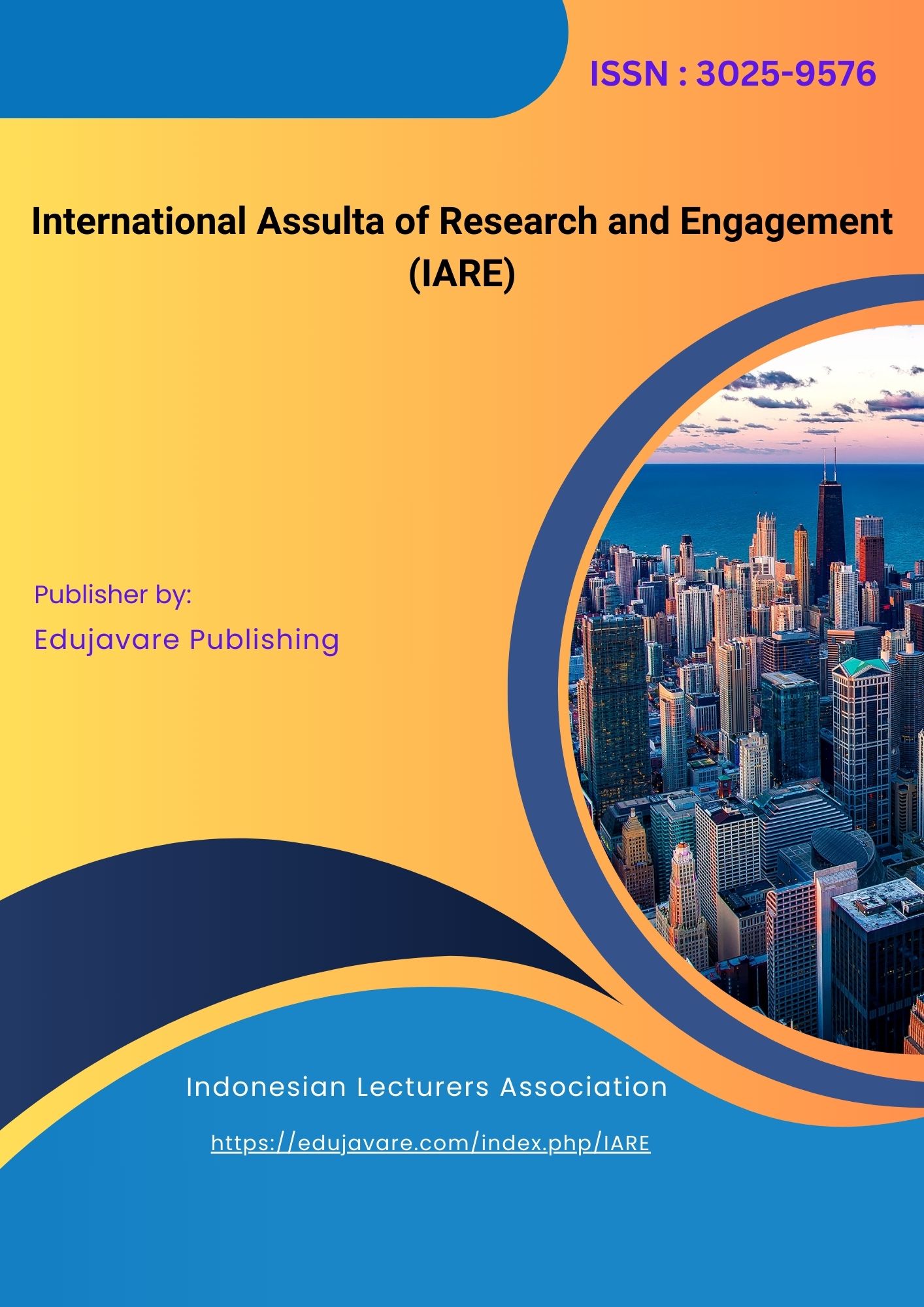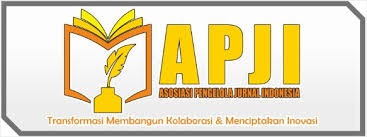Assisting Local Farmers with Smart Agriculture Practices Using IoT Technology
DOI:
https://doi.org/10.70610/iare.v3i1.807Keywords:
Community Empowerment, Iot Technology, Smart Agriculture, Smallholder Farmers, Technology AdoptionAbstract
This community service initiative aimed to improve agricultural practices in rural smallholder farming through the adoption of Internet of Things (IoT) technology for smart farming. The challenge in Desa Sukamaju, a region reliant on traditional farming methods, was the inefficient use of water and suboptimal crop yields, which were exacerbated by unpredictable weather patterns. The goal of this intervention was to empower local farmers by providing them with real-time data on soil moisture, temperature, and humidity to optimize irrigation and improve crop productivity. The approach adopted was Participatory Rural Appraisal (PRA), ensuring active farmer involvement in every phase of the program. The project utilized hands-on training to install and use IoT sensors, followed by continuous monitoring and support. Results showed a 23% reduction in water usage and an 18% increase in crop yields, particularly in vegetable crops. Additionally, qualitative feedback indicated a significant increase in farmer confidence, with 85% reporting greater technological competence. This indicates that IoT can significantly enhance resource management and crop productivity, even for farmers with limited digital experience. However, challenges such as the sustainability of technology maintenance and scalability were identified. The findings highlight the potential of IoT to modernize smallholder farming and underscore the need for continuous support and cost-effective solutions for long-term impact. The contribution of this work lies in demonstrating the practical, scalable application of IoT technology in rural farming settings, with recommendations for future projects to ensure sustainability and broader adoption.
References
A. A. Okunade and A. R. Osmani, “Effects of life expectancy on economic growth: new results using the flexible Box–Cox power transformation model,” Appl. Econ. Lett., vol. 27, no. 20, pp. 1681–1684, 2020, doi: 10.1080/13504851.2020.1713976.
A. K. Awasthi et al., “Zero waste approach towards a sustainable waste management,” Resour. Environ. Sustain., vol. 3, no. January, p. 100014, 2021, doi: 10.1016/j.resenv.2021.100014.
H. Rajpar, A. Zhang, A. Razzaq, K. Mehmood, M. B. Pirzado, and W. Hu, “Agricultural land abandonment and farmers’ perceptions of land use change in the indus plains of Pakistan: A case study of Sindh province,” Sustainability, vol. 11, no. 17, p. 4663, 2019.
Y. Hasanah, “Eco enzyme and its benefits for organic rice production and disinfectant,” J. Saintech Transf., vol. 3, no. 2, pp. 119–128, 2021, doi: 10.32734/jst.v3i2.4519.
B. Irawan, C. Rofiah, A. Asfahani, H. S. Sufyati, and W. Hasan, “Empowering Micro Small and Medium Enterprises (MSMEs) to Improve Global Economic Welfare,” Int. Assulta Res. Engagem., vol. 1, no. 2, pp. 75–86, 2023.
P. A. Prabowo, B. Supriyono, I. Noor, and M. K. Muluk, “Special autonomy policy evaluation to improve community welfare in Papua province Indonesia,” Int. J. Excell. Gov., vol. 2, no. 1, pp. 24–40, Jan. 2021, doi: 10.1108/ijeg-06-2019-0011.
A. M. Thow et al., “How can health, agriculture and economic policy actors work together to enhance the external food environment for fruit and vegetables? A qualitative policy analysis in India,” Food Policy, vol. 77, pp. 143–151, 2018.
L. Horn, N. Shakela, M. K. Mutorwa, E. Naomab, and H. M. Kwaambwa, “Moringa oleifera as a sustainable climate-smart solution to nutrition, disease prevention, and water treatment challenges: A review,” J. Agric. Food Res., p. 100397, 2022.
M. Hemalatha and P. Visantini, “Potential use of eco-enzyme for the treatment of metal based effluent,” IOP Conf. Ser. Mater. Sci. Eng., vol. 716, no. 1, 2020, doi: 10.1088/1757-899X/716/1/012016.
H. A. Al-Ababneh, “Researching Global Digital E-Marketing Trends,” Eastern-European J. Enterp. Technol., vol. 1, no. 13–115, pp. 26–38, 2022, doi: 10.15587/1729-4061.2022.252276.
Indah Sari, Anni Holila Pulungan, and Rahmad Husein, “Students’ Cognition and Attitude in Writing Descriptive Text,” Britain Int. Linguist. Arts Educ. J., vol. 2, no. 1, pp. 395–404, 2020, doi: 10.33258/biolae.v2i1.210.
D. O. Suparwata, M. A. Indrianti, M. M. Mokoginta, Y. A. Gobel, M. M. Djibran, and Z. A. Hasan, “Homeyard Contribution Based on Women Farmer Family Management (KWT) in Rural Areas,” J. AGRIKAN (Agribisnis Perikanan), vol. 15, no. 2, pp. 563–570, 2022.
A. P. Nugraha, C. Wibisono, B. Satriawan, Indrayani, Mulyadi, and Damsar, “The Influence Of Transformational Leadership, Job Crafting, Job Satisfaction, And Self-Efficacy On Job Performance Through Work Engagement Of State Civil Apparatus As An Intervening Variable In The Digital Era Of Cases In The Local Government Of Karimun R,” Cent. Eur. Manag. J., vol. 30, no. 3, pp. 2336–2693, 2022.
R. Deng, P. Benckendorff, and D. Gannaway, “Learner engagement in MOOCs: Scale development and validation,” Br. J. Educ. Technol., vol. 51, no. 1, pp. 245–262, 2020.
R. Chambers and G. R. Conway, “Sustainable rural livelihoods: practical concepts for the 21st century,” IDS Discuss. Pap., vol. 296, 1992.
V. Komalawati, “Responsibilities of Pharmacists in Drug Service With Prescription,” Tanggung Jawab Apot. Dalam Pelayanan Obat Dengan Resep Dr., pp. 237–238, 2020.
H. Treiblmaier, “The impact of the blockchain on the supply chain: a theory-based research framework and a call for action,” Supply Chain Manag. an Int. J., vol. 23, no. 6, pp. 545–559, 2018.
A. S. Sebsibe, A. S. Argaw, T. B. Bedada, and A. A. Mohammed, “Swaying pedagogy: A new paradigm for mathematics teachers education in Ethiopia,” Soc. Sci. Humanit. Open, vol. 8, no. 1, pp. 1–10, 2023, doi: 10.1016/j.ssaho.2023.100630.
T. T. Sulaiman, A. S. B. Mahomed, A. A. Rahman, and M. Hassan, “Examining the influence of the pedagogical beliefs on the learning management system usage among university lecturers in the Kurdistan Region of Iraq,” Heliyon, vol. 8, no. 6, pp. 1–9, 2022, doi: 10.1016/j.heliyon.2022.e09687.
F. Javed, M. K. Afzal, M. Sharif, and B.-S. Kim, “Internet of Things (IoT) operating systems support, networking technologies, applications, and challenges: A comparative review,” IEEE Commun. Surv. Tutorials, vol. 20, no. 3, pp. 2062–2100, 2018.
A. Fenanlampir, J. R. Batlolona, and I. Imelda, “The struggle of Indonesian students in the context of TIMSS and PISA has not ended,” Int. J. Civ. Eng. Technol., vol. 10, no. 2, pp. 393–406, 2019.
L. R. Halimah and S. V. Machdum, “Analysis of Participatory Development in Implementing Decentralized Waste Management,” Amalee Indones. J. Community Res. Engagem., vol. 4, no. 1, pp. 267–281, 2023.
A. Zakirova, G. Klychova, O. Doroshina, I. Safiullin, R. Nurieva, and Z. Zalilova, “Improvement of the procedure for assessing the personnel of the agricultural organization,” in E3S Web of Conferences, EDP Sciences, 2019, p. 2073.
A. B. Pratomo, H. N. Muthmainah, N. Kristiono, and G. C. Setyawan, “Implementation of Internet of Things (IoT) Technology in Air Pollution Monitoring in Jakarta: Quantitative Analysis of the Influence of Air Quality Change and Its Impact on Public Health in Jakarta,” West Sci. Nat. Technol., vol. 1, no. 01, pp. 40–47, 2023.
A. Asfahani, S. A. El-Farra, and K. Iqbal, “International Benchmarking of Teacher Training Programs: Lessons Learned from Diverse Education Systems,” EDUJAVARE Int. J. Educ. Res., vol. 1, no. 2, pp. 141–152, 2023.
Downloads
Published
How to Cite
Issue
Section
License
Copyright (c) 2025 Mumu Muzayyin Maq

This work is licensed under a Creative Commons Attribution-NonCommercial-ShareAlike 4.0 International License.
License: CC BY-SA 4.0 (Creative Commons Attribution-ShareAlike 4.0 International License)






 MoU
MoU 


